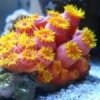Scientists go 'gaga' to find creatures beneath 600 feet of ice
-
Topics
-
Latest Update
-
5
૮꒰ ˶• ༝ •˶꒱ა ♡ Christmas One Stop Shop ♡ ૮꒰ ˶• ༝ •˶꒱ა
Zoanthid list for sale <3 - exosphere - stratosphere - beauty and the beast - white zombies / salted agave - butt kissers - ice king - pikachu - ice amgd - LA lakers - blue hornet - JF fairy tails - vamp slayers - UC (high white cover) - petroglyph - rainbow incinerators - pink diamonds - rainbow infusion - red hornet - lime chillis - XC illusionists - Van Helsing - Vamp in drag - GMK - Speckled Krak - Emerald on fire (not ready to frag) -
5
૮꒰ ˶• ༝ •˶꒱ა ♡ Christmas One Stop Shop ♡ ૮꒰ ˶• ༝ •˶꒱ა
Always encourage for you to come over and see current stock and choose the best ones first. -
0
wtb lights
looking for any aquaknight light or any light for nano tank pm me if selling thank you -
0
wts 4ft tank
4×2×2.5(12mm) fish tank/sump tank 90×50×40 and cabinet (have top up tank) (pls provide your own transport..thanks!) $ 300 Interested pm Or WhatsApp @ 82014328 -
0
WTB Bounce
As above, let me know if you have Bounce corals for sales such as OG Bounce, etc.
-







Recommended Posts
Join the conversation
You can post now and register later. If you have an account, sign in now to post with your account.